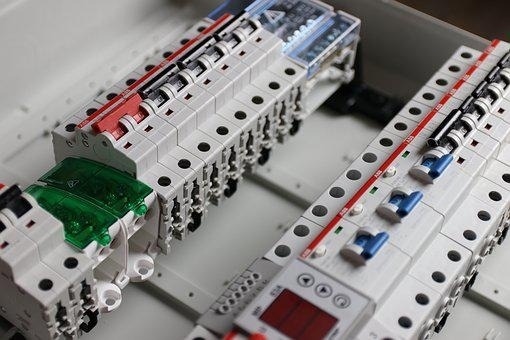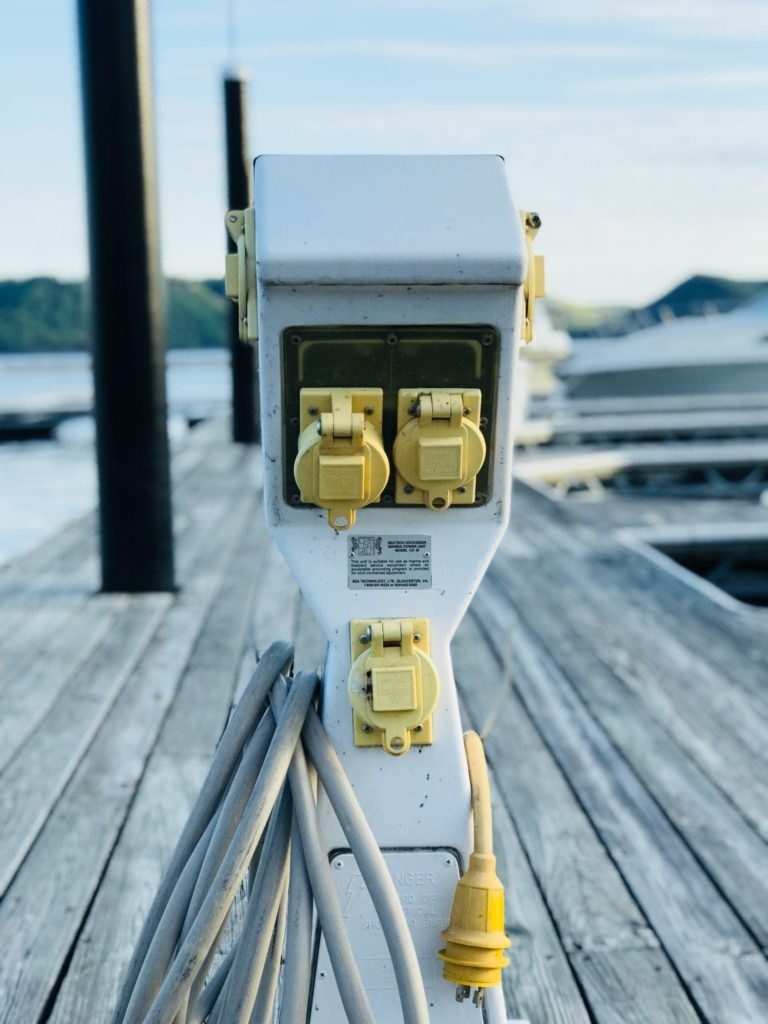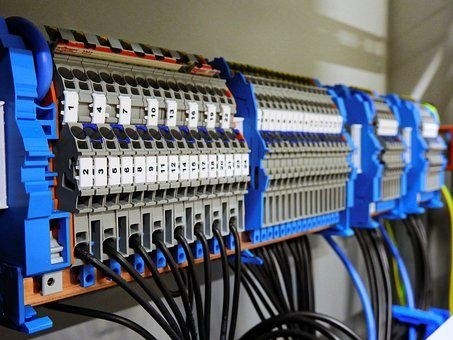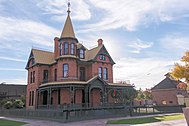Electrician in Page
Electrician Page
An average age for an electrician is 44. This is in contrast to the trend for younger generations who are more interested in education and less likely to seek skilled labor jobs. The average age of a journeyman electrical contractor is also significantly lower than that of their grandparents and parents. The demand for electricians is increasing and there is a growing shortage of labor force. Over the next eight year, the demand for electricians will increase by 11.3%. Meanwhile, residential wiring contractors will grow by 21 percent.

Electricians Page
First, you must look professional as an electrician. Electricity is often perceived as a dark force by most people, which can cause them to be anxious about the job. This is why it is important to appear calm and in control and not speak negatively about your customers. By being careful about what you speak and refraining from saying anything negative, you can accomplish this. Here are some more tips for beginning electricians. Also, you should consider getting proper training and qualifications.
Electrician in Page
An electrician will also inspect the main electric panel of your home or business. It is the central point of your entire electrical system. It also pushes electricity to various systems. A professional electrician should inspect the panel at least once annually to verify that all connections are safe and that bus bars are connected properly to the breakers. This conducts electricity. An electrician will also inspect the capacity of an electrical circuit breaker.


Electricians Page
To succeed as an electrician, one needs to possess specific skills, knowledge, and abilities in electronics, electrical theory, and mathematics. The electrical field requires people with strong hands, hand-eye coordination, and high levels of stamina. Electrical professionals should be able to perform calculations quickly, crouch, bend, and climb stairs. They should also be able to work under pressure and analyze various situations. This article will help you learn more about the skills and knowledge necessary for the electrical field.
Page Electrician
An Electrical Contractor needs to have good organisational skills. The tasks are often spread across several projects and each deadline is different. This skill allows them to manage their work load and keep a healthy work-life balance. These are the essential skills that enable an organisation to be effective in its workplace.

Electrician Page AZ
You should verify that an electrical contractor is a member before you hire them. This is a great idea. But it isn't enough to pick the first business you find. Be sure to check that they have a valid license and a solid reputation. It is also important that you check with your local licensing authorities to confirm if a business is NECA-member.
Electrician in PageElectricians Page Arizona
The resume of an electrician should include his past work experience, apprentices, and volunteer experiences. It should also highlight his accomplishments and responsibilities. Verify the references of your electrician and make sure you call them to verify their legitimacy. A good electrician should have insurance and be willing to provide proof. Ask for references to verify the authenticity of your electrician.

About Phoenix AZ
Phoenix, Arizona
|
Phoenix, Arizona
|
|
|---|---|
| City of Phoenix | |
|
Clockwise, from the top: Downtown Phoenix, St. Mary's Basilica, Rosson House, Mystery Castle, Camelback Mountain, Arizona State Capitol, Arizona Science Center, Chase Tower, and the Papago Park
|
|
|
|
|
| Nickname(s):
"Valley of the Sun", "The Valley"
|
|

Interactive map of Phoenix
|
|
Coordinates:  33°26′54″N 112°04′26″WCoordinates: 33°26′54″N 112°04′26″WCoordinates:  33°26′54″N 112°04′26″W 33°26′54″N 112°04′26″W |
|
| Country | United States |
| State | Arizona |
| County | Maricopa |
| Settled | 1867 |
| Incorporated | February 25, 1881 |
| Founded by | Jack Swilling |
| Named for | Phoenix, mythical creature |
| Government | |
| • Type | Council-Manager |
| • Body | Phoenix City Council |
| • Mayor | Kate Gallego (D) |
| Area | |
| • State Capital | 519.28 sq mi (1,344.94 km2) |
| • Land | 518.27 sq mi (1,342.30 km2) |
| • Water | 1.02 sq mi (2.63 km2) |
| Elevation | 1,086 ft (331 m) |
| Population
(2020)
|
|
| • State Capital | 1,608,139 |
| • Estimate
(2021)[3]
|
1,624,569 |
| • Rank | 5th in the United States 1st in Arizona |
| • Density | 3,102.92/sq mi (1,198.04/km2) |
| • Metro | 4,845,832 (11th) |
| Demonym | Phoenician |
| Time zone | UTC−07:00 (MST (no DST)) |
| ZIP Codes |
85001–85099
|
| Area codes | |
| FIPS code | 04-55000 |
| GNIS ID(s) | 44784, 2411414 |
| Major airport | Phoenix Sky Harbor International Airport |
| Secondary Airports | Deer Valley Airport Phoenix–Mesa Gateway Airport |
| Interstates | |
| U.S. Highways | |
| State Routes | |
| Public transportation | Valley Metro |
| Website | www |
Phoenix (/ˈfiːnɪks/ FEE-niks; Navajo: Hoozdo; Spanish: Fénix or Fínix,[citation needed] Walapai: Banyà:nyuwá[5]) is the capital and most populous city of the U.S. state of Arizona, with 1,608,139 residents as of 2020.[6] It is the fifth-most populous city in the United States,[7] and one of only two U.S. state capitals with a population of more than one million residents, along with Austin, Texas.[8][9][10]
Phoenix is the anchor of the Phoenix metropolitan area, also known as the Valley of the Sun, which in turn is part of the Salt River Valley. The metropolitan area is the 11th largest by population in the United States, with approximately 4.85 million people as of 2020.[9] Phoenix, the seat of Maricopa County, has the largest area of all cities in Arizona, with an area of 517.9 square miles (1,341 km2), and is also the 11th largest city by area in the United States.[11] It is the largest metropolitan area, both by population and size, of the Arizona Sun Corridor megaregion.
Phoenix was settled in 1867 as an agricultural community near the confluence of the Salt and Gila Rivers and was incorporated as a city in 1881. It became the capital of Arizona Territory in 1889.[12] It is in the northeastern reaches of the Sonoran Desert and has a hot desert climate.[13][14] Despite this, its canal system led to a thriving farming community with the original settlers' crops remaining important parts of the Phoenix economy for decades, such as alfalfa, cotton, citrus, and hay.[15][16] Cotton, cattle, citrus, climate, and copper were known locally as the "Five C's" anchoring Phoenix's economy. These remained the driving forces of the city until after World War II, when high-tech companies began to move into the valley and air conditioning made Phoenix's hot summers more bearable.[17]
The city averaged a four percent annual population growth rate over a 40-year period from the mid-1960s to the mid-2000s.[18] This growth rate slowed during the Great Recession of 2007–09, and has rebounded slowly.[19] Phoenix is the cultural center of the state of Arizona.[20] Phoenix is also majority minority, with 42.6% of its population identifying as Hispanic and 42.5% as "white" in the 2020 census.[21]










